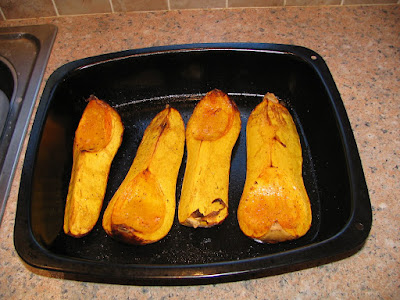My precious salad bed was a scene of devastation! Something had been digging around with gay abandon, and there were lettuces and endives upended all over the place.
 |
| The scene of devastation |
 |
| Lettuces uprooted left, right and centre |
Now I'm not absolutely sure who the culprits were, but I blame the foxes for this. I have never seen them at it, but I have read that foxes root around in the soil searching for worms. In the past I had thought that this sort of damage was most likely caused by badgers, which are powerful animals and capable of serious destruction in a small garden. I know that there are badgers in our area because my brother, who lives only a couple of hundred metres from us, has seen them, but in all honesty I have not. On the other hand, I have frequently seen foxes in my garden -- in broad daylight. In fact, this evening, when I was writing this article, a fox sidled up to the French Window, about 2 metres from where I am sitting, and peered into our Living Room. The cheek of it! Was he apologising for last night's orgy of destruction, or just gloating??? When I stood up suddenly and grabbed my camera, he beat a hasty retreat. Let's hope he is not in the mood for worms tonight...
I'm as keen as the next man to preserve our wildlife heritage, but (call it selfish if you like) having foxes destroy my veg patch is insufferable, so I tend to think of foxes as vermin! But what can I do to deter them? "Not a lot" is the answer. I put a few sticks in the ground next to my most delicate specimens, but in truth this is not likely to deter a hungry fox, so it is really just a matter of luck.
Domestic pets, specifically cats, are another serious nuisance. I must admit that until recently we were cat owners, and have derived a lot of pleasure from these animals. However, when they decide that my precious raised beds are actually cat toilets, then I begin to be less of an animal-lover. When I have young seedlings on the go, especially in the Spring-time, I often go to great lengths to protect them from cat damage, for instance by covering them with nets suspended over hoops. But that's a story for another time...
So, (dressed in my suit and tie, ready for work) I set to to effect some hasty repairs -- feverishly sticking those poor lettuces back in the soil and watering them in. If I don't do it until the evening when I get home they will probably not pull through, but swift action now may save them. If they do survive to maturity, they will have done well! Some of my seedlings must have endured such an ordeal several times, but most of them will be OK in the long run, and only a few will succumb. Isn't this the story of the Gardener's life? A constant battle of wits against Nature (i.e. disease, pests and wildlife)?
 |
| The lettuces upright once more! |
 |
| Damage repaired! |
On the bright side though, this morning I had one sympathetic witness to my efforts to restore order to the battered salad bed -- a baby robin. Over the last couple of weeks, I have seen this bird a lot. It is obviously a recent fledgeling; gangly and ungainly, fluffy, about twice the size of an adult robin. But completely unfazed by the presence of a human. It follows me around the garden hovering at only an arm's length, watching for the opportunity to sieze a worm that has been brought to the surface by my weeding activities. It sits there with its head cocked to one side eyeing me up with faintly amused expression, as if wondering how anything could be so inefficient! You wait, Matey; you'll be grateful for all those seeds I put out for you lot in the Winter time, and that bread I put on the bird-table to keep you from starving! [I haven't got a photo of this young robin yet, but it's not for want of trying...]










































































